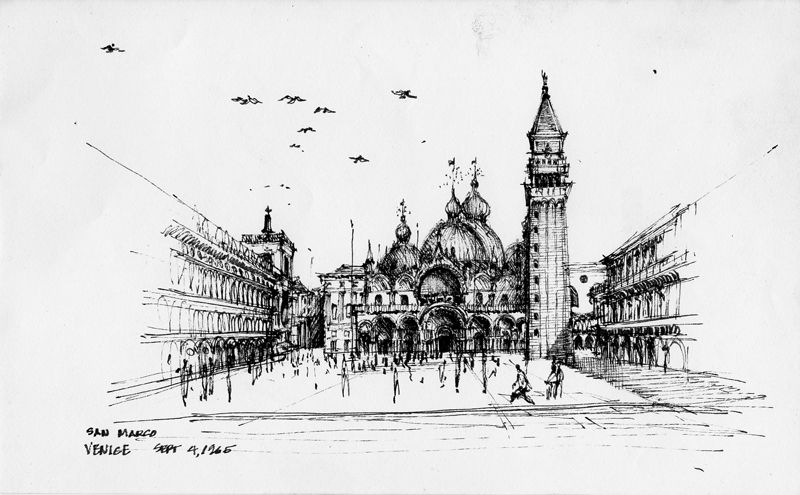
Rummaging around some old stuff stored in the basement, I came across more drawings that I did while traveling around Europe after spending the summer as an intern with Wilson & Womersley, an architectural and town planning firm in London. Above is a drawing of Piazza San Marco in Venice, done with a stub nibbed pen in 1965. Below is a similar view done with a fine-tipped nib in 1995. Prior to this, I had believed the only drawing that survived was one done of the Spanish Steps in Rome.

I will be posting a few more over the next couple of weeks.











